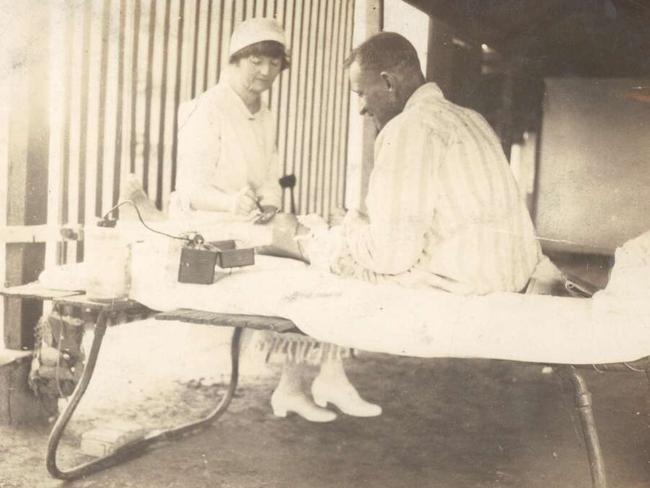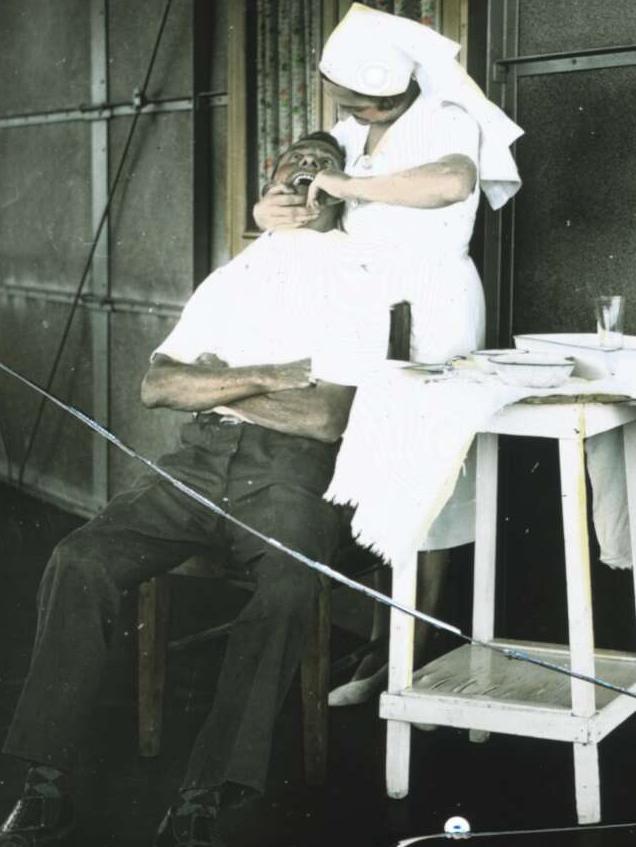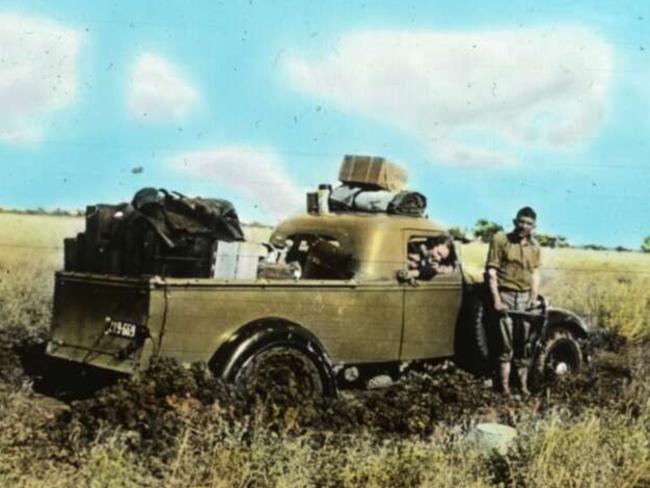Nurses who braved harsh conditions in the NSW outback to treat patients in early 1900s
IT IS an extraordinary part of our early history — the nurses of the Australian Inland Mission sent out for a tour of duty to provide medical expertise as well as “social and moral strength” to the outback. Now, we uncover their inspirational stories.
NSW
Don't miss out on the headlines from NSW. Followed categories will be added to My News.
IT IS an extraordinary part of our early history — the nurses of the Australian Inland Mission sent out for a two-year tour of duty to provide medical expertise as well as “social and moral strength” to the outback.
They were fiercely independent and resilient at a time when women did not have the right to vote but their incredible stories and experiences have often been overlooked.
Now Dr Rebecca Jones, National Library of Australia Research Fellow, has uncovered their inspirational stories.
The nurses worked for the Australian Inland Mission and were based throughout the outback in Queensland, South Australia, Western Australia and NSW.

Dr Jones has specifically looked at Birdsville and the area between Queensland, SA and NSW where some of the longest-running and earliest stations were located.
MORE STORIES
BABY-FACED THUG HAS POLICE ON ALERT FOR IBRAHIM REVENGE ATTACK
PRISON LETTERS REVEAL COLD HEART OF DOUBLE MURDERER
One nurse’s story that struck a chord with Dr Jones was that of Grace Francis.
“She was based in Birdsville and wrote a diary, so I kind of got to know her in a way,” Dr Jones said.
“She wrote a lot about the beauty of the land and also the harshness, her initial feelings of alienation and the hardships with the heat, mosquitoes and flies.”

As well as medical help, they were also looked upon to bring social and moral strength to remote inland Australia.
“Part of it was that the women could also bring the finer things in life,” Dr Jones said.
Doctors were few and far between before the Royal Flying Doctor Service was established in 1929.
“They were it and they felt that responsibility. But it was also a fantastic opportunity for women at that time, they were their own bosses and often the most educated and most respected people in the community,” Dr Jones said.


But the heat and the stress combined with the remoteness and isolation could often make not only the patients but also the nurses “unstabilised”, she said.
“In patient records, people actually attributed mental instability or nervous breakdowns directly to the effects of the weather, the heat sending people mad.”


But, despite the often harsh landscape and lifestyle, the Inland Mission nurses were extremely adventurous and confident.
“They went out fishing with indigenous people, went shooting and rode camels,” Dr Jones said.
“They cultivated this persona of being all flexible, all coping, had a ‘jolly good show’ approach to life. But it meant when they cracked, it was quite frowned upon by the AIM.”

They did their best to promote public and personal hygiene in the face of extreme weather conditions and lack of water.
“The water from the town hole is thick and not good to drink,” Sister Grace Francis wrote in her 1924 diary.
Often these desperate times called for desperate measures, especially when outback conditions meant access to food and water was not always easy.

One nurse ate a “palatable” green succulent and was sick for three days. Another group of nurses had to burn the remains of a horse that was left at the mouth of the town’s waterhole.
Dr Jones uncovered the incredible stories and information from the National Library of Australia’s five-year Digital Library Infrastructure Replacement (DLIR) program.
The program has digitised millions of images, maps, manuscripts and photographs all belonging to the AIM.
* To find out more about the secret lives of outback nurses, visit: nla.gov.au/blogs/behind-the-scenes/2018/06/19/outback-settlers
